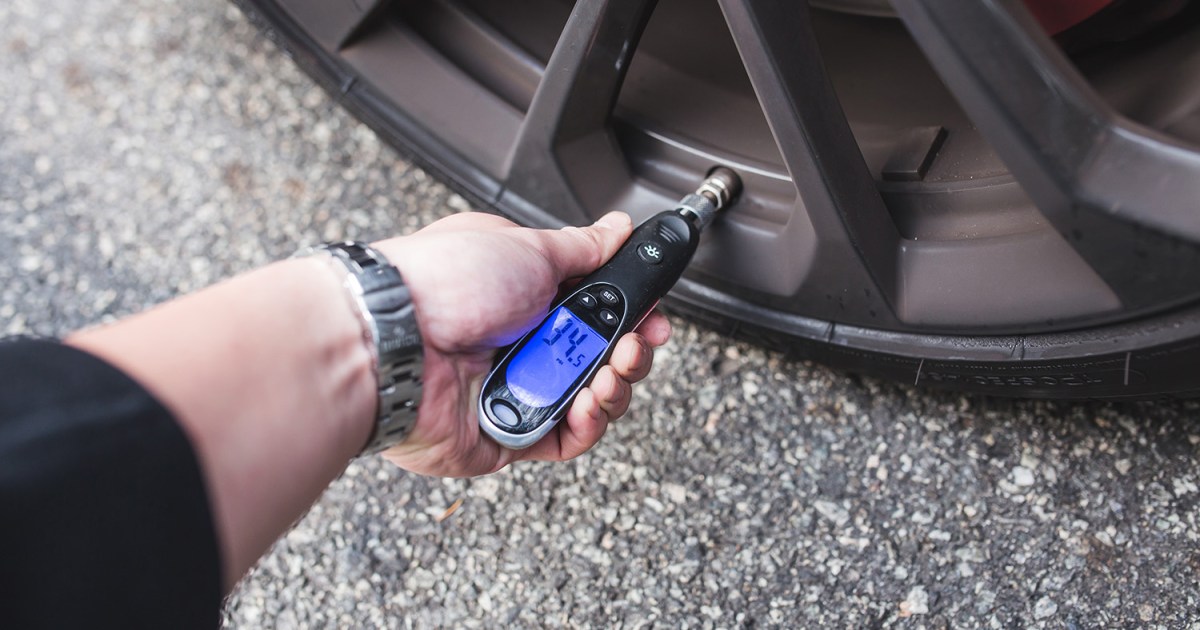Checking your car’s tire pressure is a simple yet crucial maintenance task often overlooked. Just like ensuring your gas tank isn’t empty, maintaining correct tire pressure is vital for safety and performance. Temperature fluctuations, driving conditions, and even time can affect tire pressure, impacting handling, braking, and fuel efficiency. This guide provides a step-by-step approach to checking and maintaining the correct tire pressure in your vehicle.
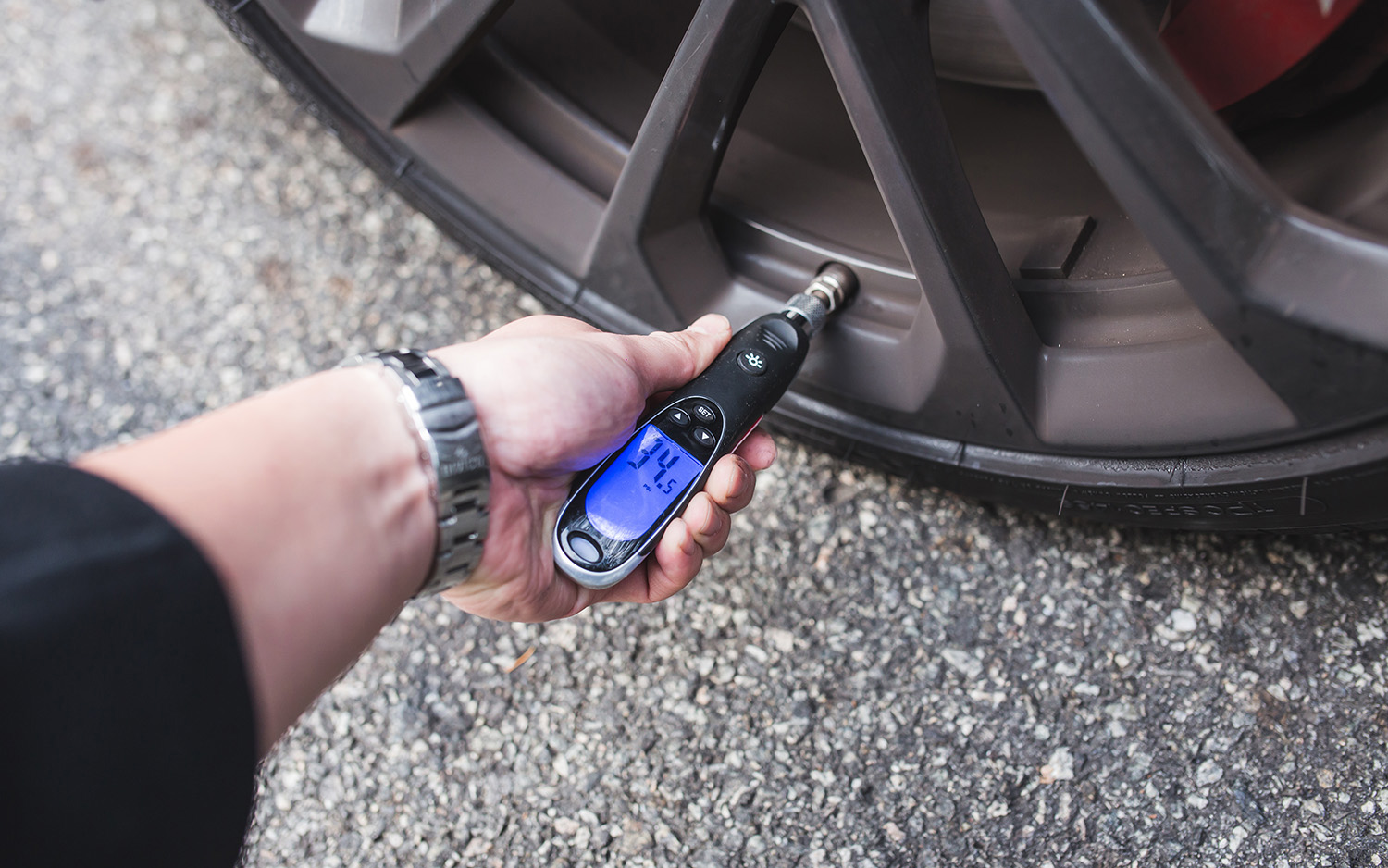 alt text: Checking tire pressure with a gauge
alt text: Checking tire pressure with a gauge
Methods for Checking Tire Pressure
Modern vehicles often feature a Tire Pressure Monitoring System (TPMS). Mandated in the U.S. for vehicles manufactured after September 2007 (as part of the TREAD Act following the Firestone tire recall), TPMS alerts drivers to low tire pressure via a dashboard indicator. Some systems provide individual tire pressure readings, while others offer a general warning. The implementation of TPMS significantly improved automotive safety.
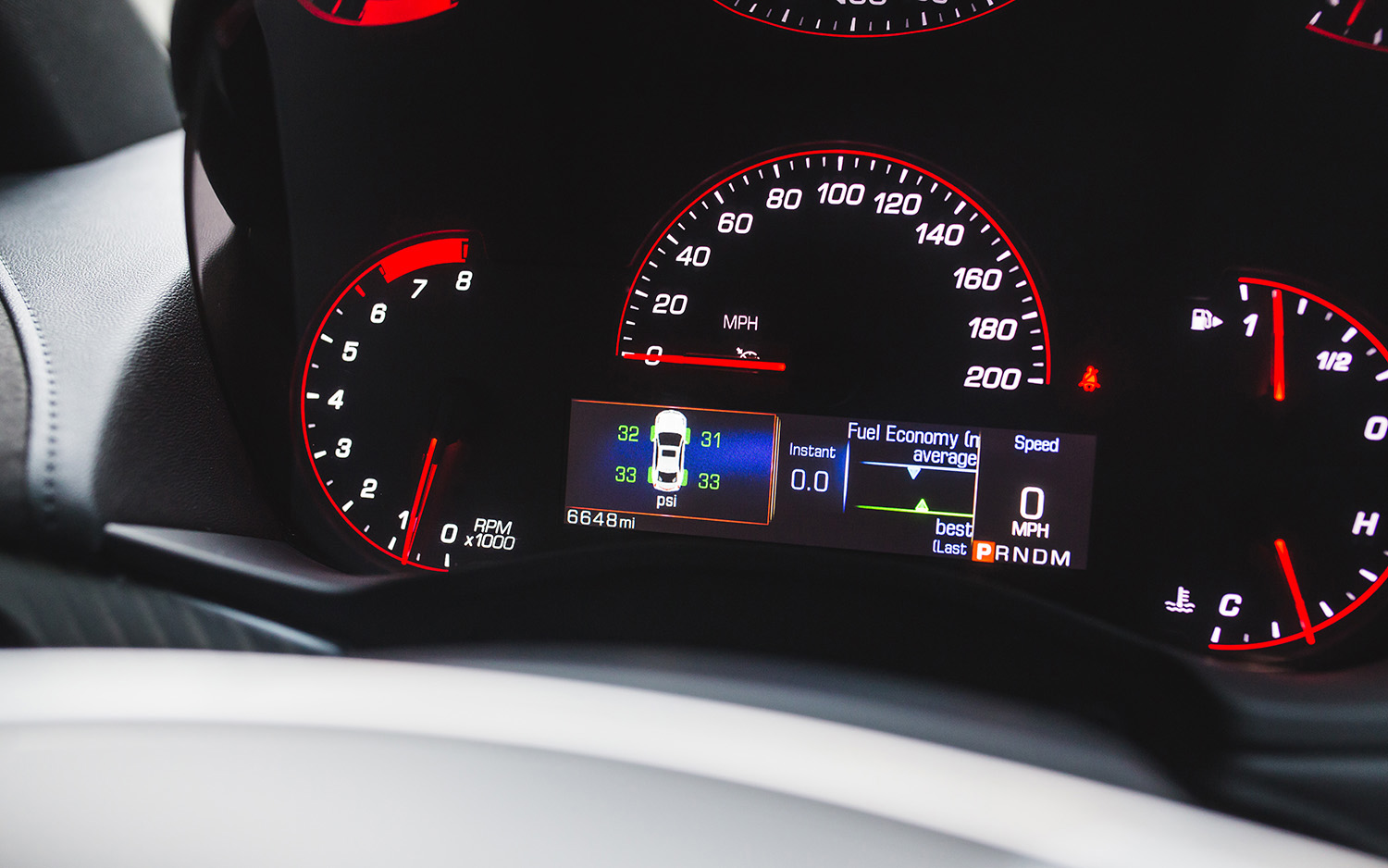 alt text: Example of a TPMS display on a car's dashboard
alt text: Example of a TPMS display on a car's dashboard
If your vehicle lacks TPMS or only provides a general warning, you’ll need a tire pressure gauge. These are inexpensive and readily available at gas stations, auto parts stores, and hardware stores. Analog and digital gauges are common, each offering a simple way to obtain accurate pressure readings.
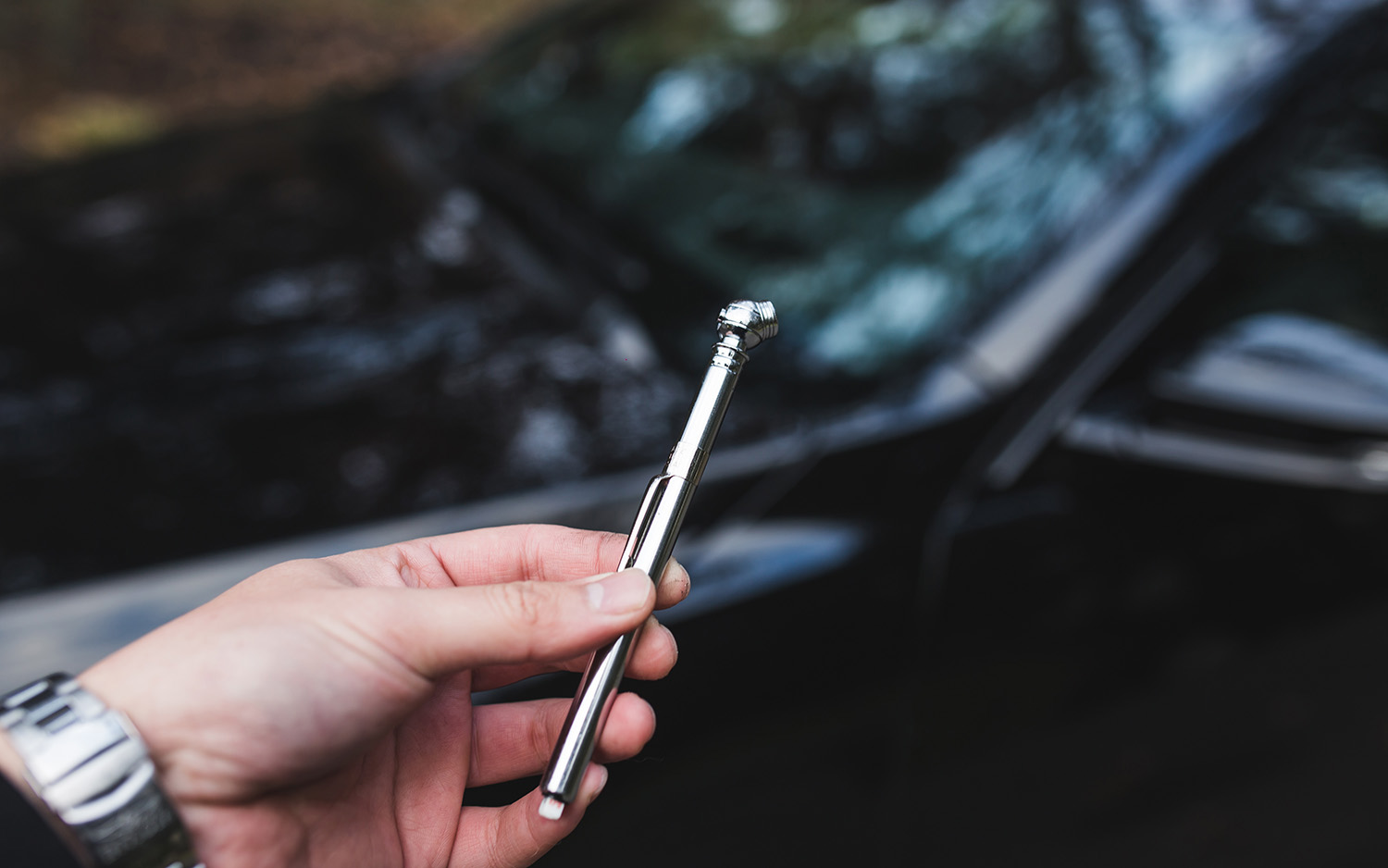 alt text: Analog tire pressure gauge
alt text: Analog tire pressure gauge
Step-by-Step Guide to Checking Tire Pressure
- Find the Recommended Tire Pressure: Consult your owner’s manual or the sticker typically located on the driver’s side doorjamb. This sticker specifies the recommended tire pressure for your vehicle’s make and model.
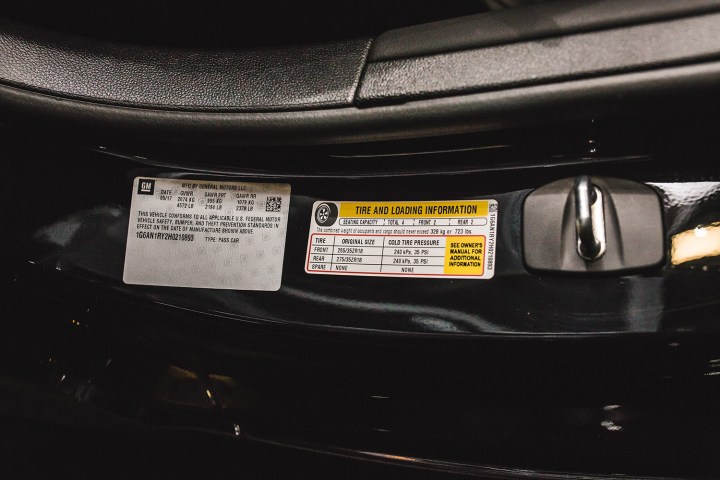 alt text: Tire pressure information sticker on a car door
alt text: Tire pressure information sticker on a car door
-
Check the Tire Sidewall: Verify the information on the tire sidewall matches your owner’s manual. This confirms the tire size and load rating are appropriate for your vehicle.
-
Remove the Valve Stem Cap: Locate the valve stem on your tire and remove the protective cap.
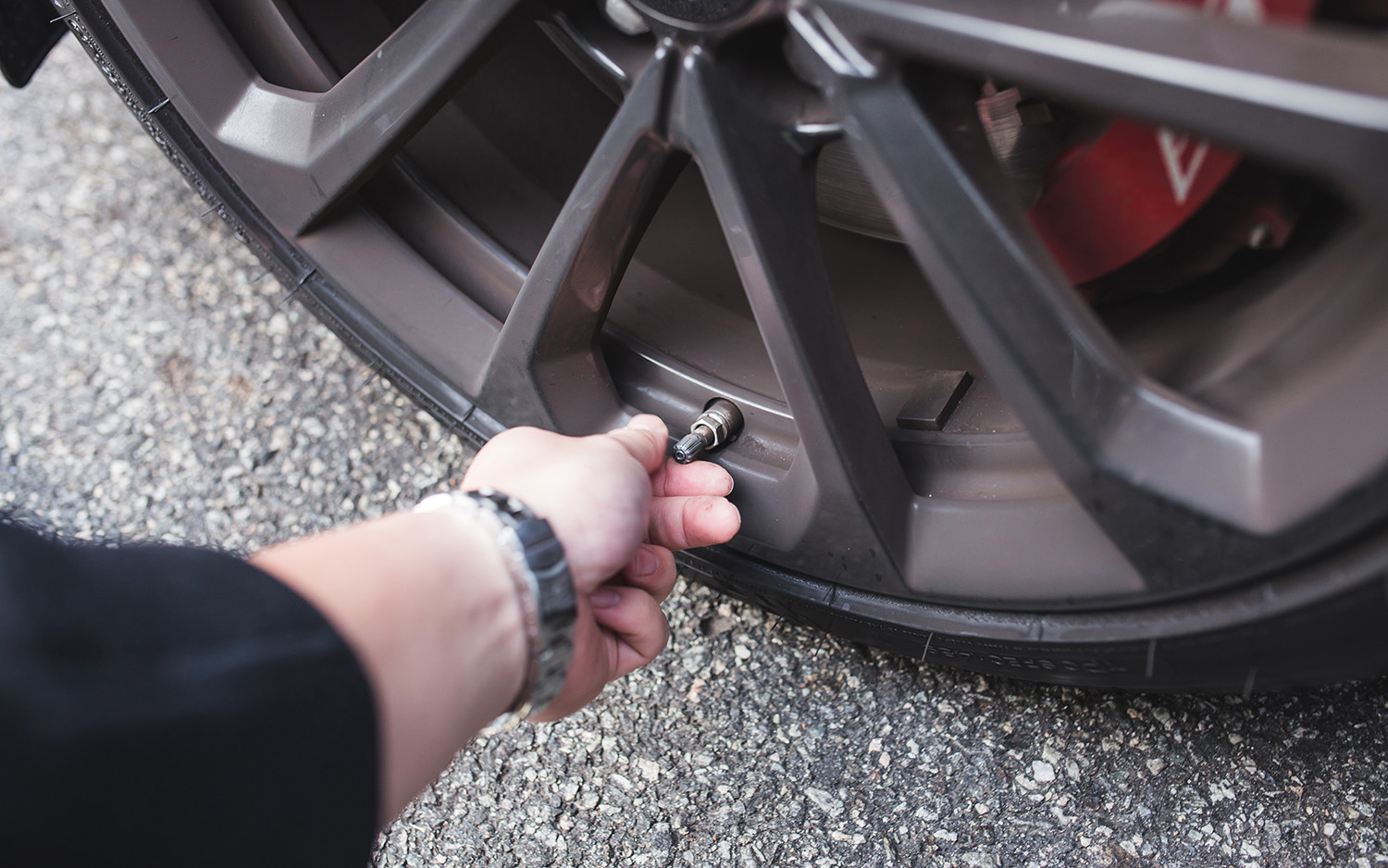 alt text: Removing the valve stem cap from a car tire
alt text: Removing the valve stem cap from a car tire
- Use the Tire Pressure Gauge: Press the gauge firmly onto the valve stem for a few seconds. You’ll hear a brief hiss of air, which is normal.
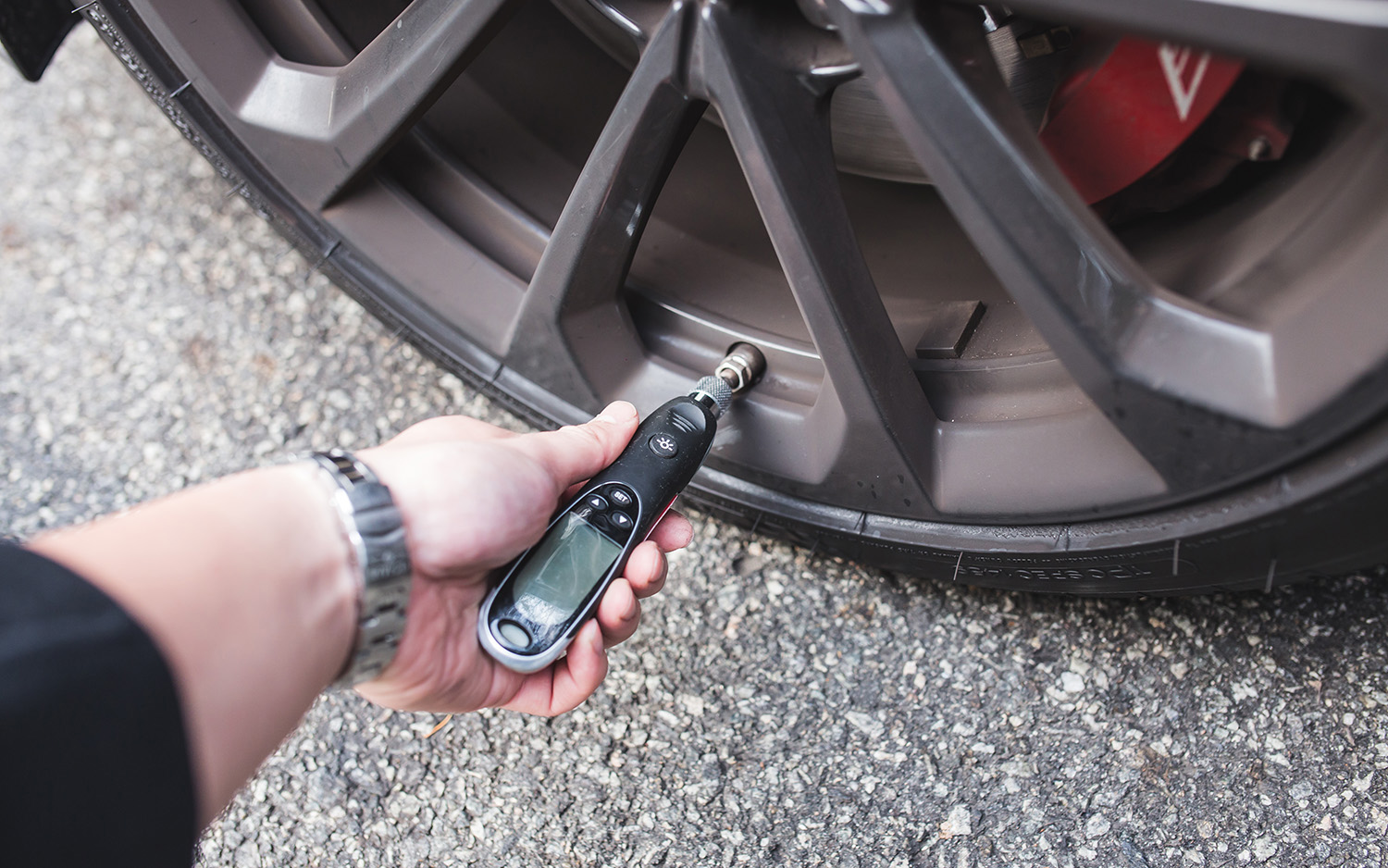 alt text: Using a tire pressure gauge to check tire pressure
alt text: Using a tire pressure gauge to check tire pressure
- Read the Measurement: The gauge will display the pressure in pounds per square inch (psi). Compare this reading to the recommended pressure.
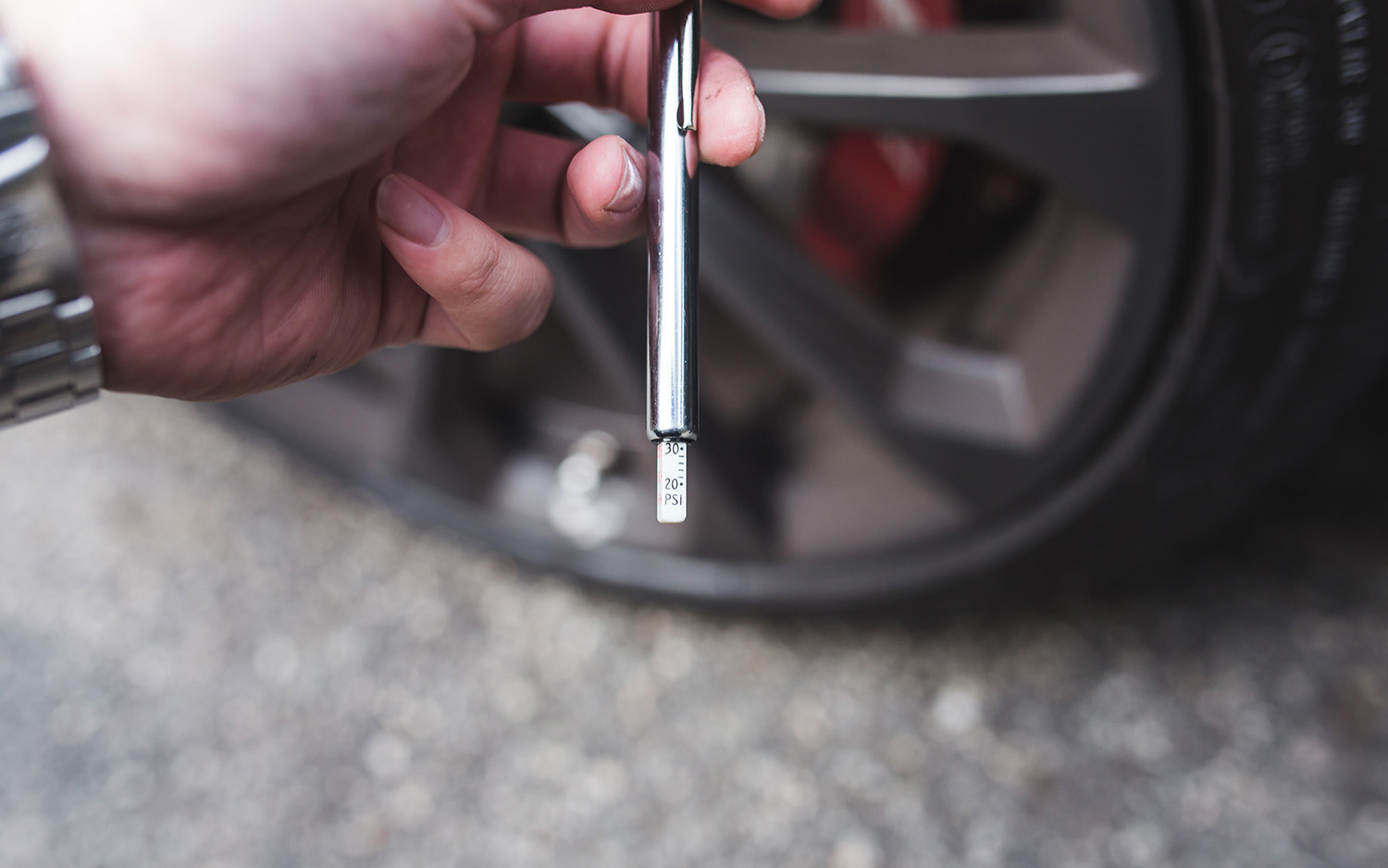 alt text: Reading the tire pressure on a gauge
alt text: Reading the tire pressure on a gauge
-
Repeat for All Tires: Check the pressure in all four tires, and the spare tire if your vehicle has one.
-
Inflate or Deflate as Needed: If the pressure is low, add air using a compressor or hand pump. If the pressure is high, release some air by pressing the metal pin inside the valve stem. Gas stations typically have air pumps available.
Nitrogen-Filled Tires
Some tires are filled with nitrogen, which is less susceptible to temperature fluctuations than regular air. Nitrogen-filled tires are typically indicated by green valve stem caps. While it’s preferable to refill nitrogen tires with nitrogen, topping off with regular air in a pinch won’t cause significant harm. Costco and some dealerships offer free nitrogen refills.
Conclusion
Regularly checking your tire pressure is essential for safe and efficient driving. By following these simple steps, you can ensure your tires are properly inflated, contributing to optimal vehicle performance and extending tire lifespan. Make checking your tire pressure a routine part of your car maintenance.



